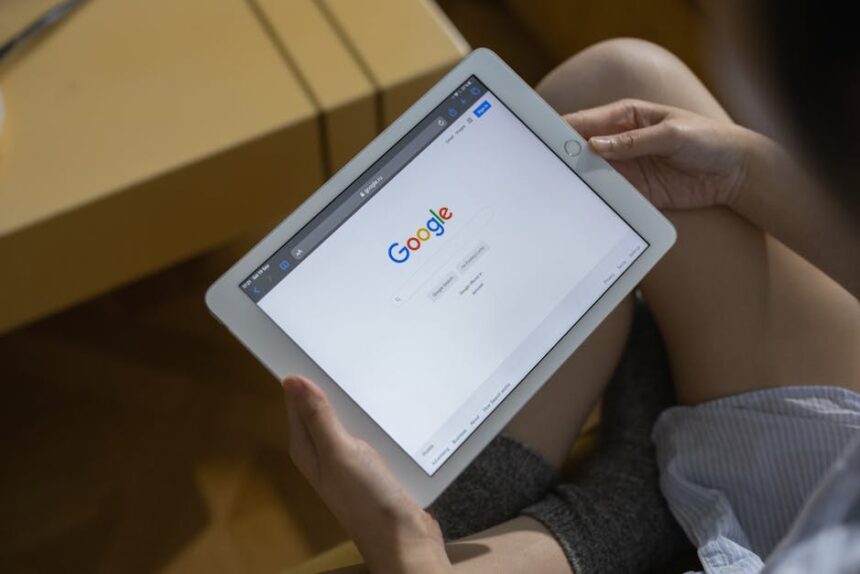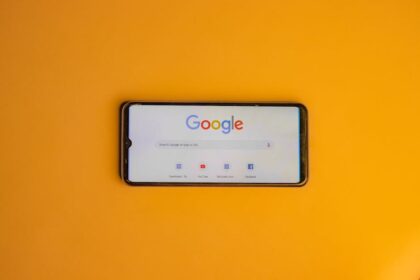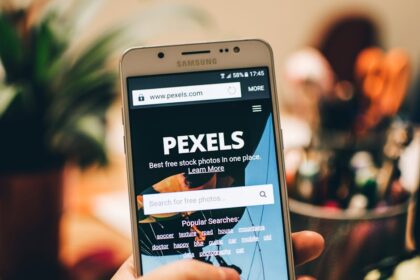Understanding Mobile-First Indexing: A Paradigm Shift for Web Developers
Mobile-First Indexing (MFI) fundamentally redefines how Google crawls, indexes, and ranks websites. No longer is the desktop version the primary consideration; instead, Google’s algorithms predominantly use the mobile version of a site’s content for indexing and ranking signals. For web developers, this shift is not merely an SEO tweak; it mandates a complete re-evaluation of how websites are built, optimized, and maintained to ensure discoverability and performance in the modern search landscape. Google’s transition to MFI, which largely completed for all active sites in 2021, reflects the undeniable reality of an increasingly mobile-centric internet. Users are overwhelmingly accessing information, services, and entertainment via smartphones and tablets. To deliver the most relevant and high-quality results, Google must mirror this user behavior, making the mobile experience the benchmark for its search assessments. This paradigm shift requires developers to adopt a “mobile-first” mindset from conception, focusing on everything from content parity and technical SEO to performance and user experience on smaller screens. The implications span across every layer of web development, from server configuration to front-end rendering.
The Genesis of Mobile-First Indexing: Why Google Made the Switch
The rationale behind Google’s move to MFI is rooted in user behavior and the evolution of web consumption. For years, Google’s traditional index primarily relied on the desktop version of a website. However, as mobile browsing exploded, search queries from mobile devices surpassed those from desktops. This created a significant discrepancy: Google was often indexing and ranking content based on a desktop experience, while the majority of its users were encountering a potentially different, and often inferior, mobile experience. This could lead to a situation where a site ranked well on desktop but offered a poor, slow, or incomplete experience on mobile, frustrating users and undermining Google’s mission to provide the best possible results.
Google’s core objective is to deliver the most relevant and useful information to its users, and to do so quickly. If a site’s mobile content was sparse, loaded slowly, or was difficult to navigate, it offered a poor user experience despite potentially rich desktop content. By switching to MFI, Google ensures that the version of the site it uses for ranking closely aligns with what most users actually see and experience. This prevents situations where mobile users are directed to pages that don’t perform well or lack critical content, thereby enhancing the overall quality of search results. Furthermore, it incentivizes developers and site owners to invest in their mobile presence, knowing it directly impacts their search visibility. This strategic move aligns Google’s indexing practices with real-world mobile usage patterns, pushing the web ecosystem towards a more uniformly high-quality mobile experience.
Impact on SEO and Ranking Signals
Mobile-First Indexing directly influences a website’s SEO performance and ranking. Fundamentally, if your mobile site is not optimized, your entire search presence is at risk.
-
Content Parity is Paramount: The most significant impact is on content. If your mobile site has less content than your desktop version (e.g., hidden tabs, fewer product details, truncated blog posts), Google will only index the content present on the mobile version. This means valuable keywords, textual information, and answers to user queries available on desktop might be completely missed by Googlebot-Mobile, leading to lower rankings for relevant queries. Developers must ensure that all critical content, including text, images, and videos, is equally accessible and visible on both mobile and desktop versions.
-
Structured Data Consistency: Schema markup, vital for rich snippets and enhanced search results, must be identical on both mobile and desktop versions. Discrepancies can lead to a loss of rich snippets or misinterpretation of content by Google, impacting click-through rates and visibility.
-
Metadata and Internal Linking: Title tags, meta descriptions, and header tags (
,
, etc.) should be consistent. More importantly, internal linking structures and navigation must be fully functional and crawlable on the mobile site. If internal links are broken or difficult to navigate on mobile, Googlebot-Mobile may struggle to discover all pages, potentially harming indexation and link equity distribution.
-
Mobile Page Speed and Core Web Vitals: While MFI doesn’t directly mean mobile speed is the only ranking factor, it elevates its importance significantly. Core Web Vitals (Largest Contentful Paint, First Input Delay, Cumulative Layout Shift), which are measured primarily from a mobile perspective, are now crucial ranking signals. A slow mobile site will face significant ranking challenges. Developers must prioritize performance optimizations like image compression, efficient CSS/JavaScript delivery, and server response times.
-
User Experience (UX) Signals: Factors like ease of navigation, avoidance of intrusive interstitials, and touch-friendliness, all critical for mobile UX, become de facto ranking considerations. Google aims to rank sites that offer a superior experience, and with MFI, that experience is predominantly judged through the mobile lens.
-
Separate Mobile URLs (m.dot sites): For sites using
m.example.comstructures, MFI means Google primarily indexes the content from them.dotURL. This necessitates even greater attention to them.dotsite’s completeness and technical health, including correctrel="canonical"andrel="alternate"annotations. Any issues on them.dotversion will directly affect the ranking of the main domain.
In essence, MFI consolidates the mobile experience as the primary determinant of a site’s search engine performance. Neglecting mobile optimization is no longer just a missed opportunity; it’s a direct path to diminished visibility and lower rankings.
Technical Considerations for Developers in the MFI Era
For web developers, MFI demands a meticulous approach to various technical aspects of website construction and maintenance.
1. Responsive Design and Viewport Configuration:
The preferred method for MFI is responsive web design, where the same HTML code serves different layouts based on screen size using CSS media queries.
- Viewport Meta Tag: Crucial for responsive design, the
tag tells browsers to render the page at the device’s width and scale appropriately. Without it, mobile devices might render pages at desktop width, making text tiny and requiring horizontal scrolling. - Fluid Grids and Flexible Images: Use relative units (percentages,
em,rem,vw,vh) for layouts, fonts, and images instead of fixed pixel values. This ensures elements scale gracefully across various screen sizes. - Media Queries: Leverage CSS media queries (
@media screen and (max-width: 768px)) to apply specific styles for different breakpoints, adjusting layout, font sizes, and visibility of elements.
2. Content Parity: The Cornerstone of MFI Success:
Ensure that the content served to Googlebot-Mobile is identical to what Googlebot-Desktop would see.
- Hidden Content: Avoid hiding content on mobile that is present on desktop, thinking it improves mobile UX (e.g., “click to expand” sections that are initially empty). While not always penalized, if critical content is only revealed by user interaction, Google might not discover it. Ensure all vital content is available in the initial HTML response for mobile.
- Images and Videos: Ensure all images and videos present on the desktop version are also present and accessible on the mobile version. Use responsive images (
element orsrcsetattribute) to serve optimized image sizes. - Ads and Pop-ups: While ads are necessary for many sites, intrusive interstitials (full-screen pop-ups that obscure content) can harm mobile UX and potentially lead to penalties. Ensure ads are well-integrated and non-disruptive.
3. Structured Data Consistency:
Schema markup is crucial for enhancing search listings and must be consistent across device types.
- Duplicate Schema: Ensure the same structured data (e.g.,
Product,Article,Recipeschema) is present on both the desktop and mobile versions of a page. - Accurate Data: Verify that the data within the schema is accurate and reflects the content visible on the mobile page. Use Google’s Rich Results Test to validate.
4. Internal Linking and Navigation:
The mobile navigation must be fully functional and crawlable by Googlebot-Mobile.
- Crawlable Links: Ensure all internal links are HTML-based and accessible to crawlers, even if hidden behind a “hamburger” menu. JavaScript-driven navigation that requires user interaction to load links might not be fully discovered.
- Site Map: Mobile site maps (
sitemap.xml) should accurately reflect all pages, regardless of device type, to aid discovery. - Breadcrumbs: Implement clear breadcrumbs on mobile to help users (and crawlers) understand site structure.
5. Image and Video Optimization:
Heavy media files are a primary cause of slow mobile load times.
- Responsive Images: Use
srcsetandsizesattributes with theelement to serve different image resolutions based on the user’s device and viewport. This avoids sending unnecessarily large images to mobile users. - Image Formats: Utilize modern image formats like WebP and AVIF that offer superior compression without sacrificing quality.
- Lazy Loading: Implement lazy loading for images and videos that are below the fold. This ensures that assets are loaded only when they are about to enter the viewport, improving initial page load times. Be cautious with lazy loading above-the-fold content, as it can negatively impact Largest Contentful Paint (LCP). Use
loading="lazy"attribute or Intersection Observer API. - Video Embeds: Ensure video players are responsive and embedded efficiently (e.g., using
withaspect-ratioCSS property or dedicated video libraries) to prevent layout shifts. Host videos on CDNs for faster delivery.
6. JavaScript and CSS Handling:
Googlebot-Mobile renders pages more comprehensively than older crawlers, but JavaScript still poses challenges if not handled correctly.
- Server-Side Rendering (SSR) / Hydration: For JavaScript-heavy applications (SPAs, PWAs), consider SSR or static site generation (SSG) to deliver a pre-rendered HTML version of the page to the crawler, ensuring immediate content visibility. Client-side rendering (CSR) can delay content availability for Googlebot.
- Hydration: If using SSR, ensure proper hydration on the client-side to make the page interactive after the initial render.
- CSS Delivery: Prioritize critical CSS inline in the
for above-the-fold content to improve First Contentful Paint (FCP). Defer non-critical CSS or load it asynchronously. - JavaScript Execution: Minimize render-blocking JavaScript. Defer parsing of non-critical JavaScript using
deferorasyncattributes. Break up long-running JavaScript tasks. - Googlebot’s Limitations: While Googlebot is proficient, it still has limitations. Ensure that all content and links that need to be indexed are available in the initial HTML payload or easily discoverable after a reasonable render time. Test with Google Search Console’s URL Inspection tool and its “View rendered page” feature.
7. Load Speed and Core Web Vitals (CWV):
Mobile speed is critical for MFI and directly impacts CWV.
- LCP (Largest Contentful Paint): Optimize the largest visible element on the page (image, video, text block) to load quickly. This involves image optimization, preloading critical resources, and fast server response times.
- FID (First Input Delay): Minimize JavaScript execution time and main thread blocking to ensure the page responds quickly to user interaction.
- CLS (Cumulative Layout Shift): Prevent unexpected layout shifts by reserving space for dynamically loaded content (images, ads, embeds), defining explicit dimensions for elements, and avoiding injecting content above existing content.
- Server Response Time (TTFB): Optimize server-side code, use efficient databases, and leverage a Content Delivery Network (CDN) to reduce Time To First Byte.
- Resource Prioritization: Use
preload,preconnect, anddns-prefetchdirectives to prioritize critical resources and establish early connections to important domains.
8. AMP (Accelerated Mobile Pages):
While not a direct ranking factor for MFI, AMP pages are often fast by nature and can provide a good mobile experience. If implemented, ensure AMP pages are valid and consistent with the canonical non-AMP versions. Google still prioritizes the canonical non-AMP version for MFI, but AMP can still be beneficial for news publishers or content sites seeking ultra-fast mobile delivery in certain contexts (e.g., Top Stories carousel).
9. Internationalization (Hreflang):
For sites serving multiple languages or regions, ensure hreflang annotations are consistent across desktop and mobile versions and correctly point to the mobile-optimized equivalent for each language/region.
10. Security (HTTPS):
HTTPS is a confirmed ranking signal and essential for user trust. Ensure your mobile site is served over HTTPS. Redirect HTTP to HTTPS correctly and avoid mixed content warnings.
11. User Experience (UX) on Mobile:
Beyond technical metrics, overall mobile usability is paramount.
- Touch Targets: Ensure buttons and links are large enough and spaced adequately for easy tapping on touchscreens.
- Legible Fonts: Use font sizes that are easy to read on mobile devices without pinching or zooming.
- Form Fields: Design forms for mobile entry, using appropriate input types (e.g.,
type="email",type="tel") and auto-complete attributes. - No Intrusive Interstitials: Avoid pop-ups that cover the main content, especially upon entry, as these severely hamper mobile UX and can lead to penalties.
- Mobile-Friendly Navigation: Implement clear, concise navigation that is intuitive on small screens. Hamburger menus are common but ensure critical links are easily accessible.
Tools and Testing for Mobile-First Indexing
Effective monitoring and testing are indispensable for ensuring your site is MFI-ready.
-
Google Search Console (GSC):
- Mobile Usability Report: This is your primary diagnostic tool. It identifies specific pages on your site that have mobile usability issues (e.g., content wider than screen, text too small, clickable elements too close). Addressing these errors is critical.
- URL Inspection Tool: Allows you to fetch and render a specific URL as Googlebot-Smartphone sees it. Crucially, use the “Test Live URL” feature to get the most up-to-date information, including HTTP response, page resources, JavaScript console messages, and a screenshot of how Googlebot renders the page. This is invaluable for debugging content parity and rendering issues.
- Core Web Vitals Report: Provides site-wide performance data, flagging pages with poor LCP, FID, or CLS scores based on real user data (CrUX Report).
- Index Coverage Report: Helps identify issues where pages might not be indexed, which could be related to crawlability issues on the mobile version.
- Settings > Crawl Stats: Observe Googlebot-Smartphone activity. An increase in smartphone crawls after a migration indicates Google is actively using your mobile version.
-
PageSpeed Insights:
- Powered by Lighthouse and Chrome User Experience Report (CrUX), this tool provides both lab data (simulated environment) and field data (real user experience) for mobile and desktop. It offers actionable recommendations for improving Core Web Vitals and overall page speed. Focus on the mobile scores.
-
Lighthouse:
- An open-source, automated tool for improving the quality of web pages. It provides audits for performance, accessibility, best practices, SEO, and Progressive Web Apps. Run Lighthouse from Chrome DevTools (Audits tab) or via its CLI. Always run it on a mobile simulation (e.g., using “Simulated Throttling” and a mobile device preset) to get an accurate picture for MFI.
-
Chrome DevTools:
- Device Mode: Simulate various mobile devices and viewports. Test how your responsive design adapts to different screen sizes.
- Network Tab: Analyze network requests, identify slow-loading resources, and test caching strategies.
- Performance Tab: Record page load and interaction events to identify rendering bottlenecks and JavaScript execution issues.
- Coverage Tab: Discover unused CSS and JavaScript, which can bloat page size and slow down loading.
- Console Tab: Check for JavaScript errors or warnings that might prevent content from rendering correctly.
-
Mobile-Friendly Test (Google):
- A simple, quick tool that checks if a page is considered mobile-friendly by Google. While its results are less detailed than GSC’s URL Inspection tool, it’s a good first check.
-
Screaming Frog SEO Spider (or similar desktop crawlers):
- Configure these tools to crawl your site as Googlebot-Smartphone. This can help identify issues like broken links, missing content, or metadata discrepancies on the mobile version at scale.
-
Third-Party Performance Monitoring Tools:
- Tools like GTmetrix, WebPageTest, and Pingdom offer detailed waterfall charts and performance metrics. Ensure you test from locations relevant to your user base and select mobile device simulation options.
Common Pitfalls and How to Avoid Them in a Mobile-First World
Despite Google’s clear guidelines, developers frequently encounter challenges during the MFI transition. Awareness of these common pitfalls can prevent costly mistakes.
-
Content Discrepancy (The #1 Culprit):
- Pitfall: Hiding significant portions of content (text, images, features) on the mobile version, believing it improves usability or reduces clutter.
- Avoid: Ensure all content critical for SEO and user understanding is present and discoverable on the mobile version. If content is behind a tab or accordion, ensure it’s still present in the initial HTML and not loaded dynamically after a user click if you want Google to see it without a user interaction. Prioritize ensuring content is available in the DOM after rendering.
-
Missing Structured Data:
- Pitfall: Implementing schema markup only on the desktop version, or having different, incomplete schema on the mobile version.
- Avoid: Verify that structured data is identical and correctly implemented on both desktop and mobile URLs for the same content. Use Google’s Rich Results Test for validation.
-
Inconsistent Metadata:
- Pitfall: Different title tags, meta descriptions, or
rel="canonical"tags between desktop and mobile versions of the same URL. - Avoid: Maintain consistent metadata across both versions. If using separate mobile URLs (
m.dot), ensurerel="canonical"points to the desktop version (or self-referencing for the mobile page if that’s preferred for indexing) andrel="alternate"correctly links the two versions.
- Pitfall: Different title tags, meta descriptions, or
-
Uncrawlable JavaScript/CSS:
- Pitfall: Blocking JavaScript or CSS files in
robots.txt, preventing Googlebot-Mobile from rendering the page correctly and seeing all content. - Avoid: Never block CSS or JavaScript files that are essential for rendering the page. Google needs these to understand your page’s layout and content. Use the URL Inspection tool to confirm Googlebot can fetch all necessary resources.
- Pitfall: Blocking JavaScript or CSS files in
-
Slow Mobile Load Times:
- Pitfall: Neglecting mobile performance optimization, leading to poor Core Web Vitals scores. Heavy images, excessive JavaScript, and inefficient server responses are common culprits.
- Avoid: Aggressively optimize images (compression, responsive images, WebP), lazy-load off-screen assets, minify CSS/JS, defer non-critical JS, and ensure fast server response times. Implement a CDN. Regularly test with PageSpeed Insights and Lighthouse.
-
Poor Mobile User Experience (UX):
- Pitfall: Non-responsive design, tiny text, touch targets too small, intrusive interstitials, or difficult navigation.
- Avoid: Implement a truly responsive design. Ensure proper viewport meta tags. Use legible font sizes and generous spacing for clickable elements. Avoid full-screen pop-ups that block content. Design intuitive, mobile-first navigation.
-
Incorrect
hreflangImplementation (for multilingual sites):- Pitfall:
hreflangannotations pointing to desktop versions from mobile pages, or vice versa, or simply being inconsistent across devices. - Avoid: Ensure
hreflangattributes on your mobile URLs point to the corresponding mobile URLs for other languages/regions, and desktop URLs point to desktop equivalents. Consistency is key.
- Pitfall:
-
Server Overload/Capacity Issues for Googlebot-Mobile:
- Pitfall: Mobile-first indexing means Googlebot-Smartphone will be crawling your site more heavily. If your server struggles to handle the increased crawl rate, it can lead to crawl errors and indexing delays.
- Avoid: Monitor server logs and GSC’s Crawl Stats. Ensure your hosting infrastructure is robust enough to handle the increased load. Optimize server response times.
-
Over-reliance on
m.dotSites without Proper Configuration:- Pitfall: Assuming
m.dotsites will automatically rank well without content parity or correctrel="canonical"andrel="alternate"annotations. - Avoid: Treat your
m.dotsite as the primary source of truth for Google. Ensure its content is complete, its performance is excellent, and therel="canonical"andrel="alternate"tags are perfectly configured between desktop and mobile versions to signal their relationship correctly. For separate mobile URLs, the mobile page should typically have arel="canonical"pointing to the desktop page, and the desktop page should have arel="alternate"pointing to the mobile page.
- Pitfall: Assuming
-
Ignoring Google Search Console Warnings:
- Pitfall: Not regularly checking GSC’s Mobile Usability report or other warnings and failing to address reported issues promptly.
- Avoid: Make GSC an integral part of your development workflow. Proactively address any warnings or errors reported. Use the “Validate Fix” feature to inform Google that you’ve resolved issues.
By systematically addressing these common pitfalls, web developers can proactively ensure their websites are not only compatible with Mobile-First Indexing but also optimized for peak performance and visibility in Google’s mobile-centric search environment.
Future Trends and Continuous Optimization for a Mobile-First World
Mobile-First Indexing is not a static destination but a foundational shift in how Google interacts with the web. For web developers, this means the principles of mobile optimization must be deeply embedded in every stage of development, not treated as an afterthought. The future of search will only continue to lean more heavily into the mobile experience, making continuous adaptation and optimization paramount.
-
Deepening Focus on User Experience (UX): As AI and machine learning in Google’s algorithms become more sophisticated, the nuances of user experience will gain even more weight. This goes beyond just loading speed. It includes intuitive navigation, effortless interaction, delightful animations (without hindering performance), and content presentation that truly serves the user’s intent on a mobile screen. Developers will need to become more adept at UX research and A/B testing specifically for mobile interfaces. Metrics like bounce rate, time on site, and conversion rates for mobile users will implicitly inform ranking signals.
-
Advancements in Core Web Vitals and New Metrics: The current Core Web Vitals (LCP, FID, CLS) are likely to evolve, with new metrics introduced to capture an even more holistic view of page experience. Google has already indicated a potential shift from FID to INP (Interaction to Next Paint) as a more comprehensive measure of responsiveness. Developers must stay updated with these changes and proactively optimize for new performance indicators as they emerge. Tools will also evolve to provide more granular insights into mobile performance.
-
The Rise of AI-Generated Content and User Intent: With the proliferation of large language models (LLMs) and generative AI, the web will see an increase in AI-generated content. For search engines, discerning high-quality, authoritative content that genuinely answers user queries will be crucial. Developers might need to consider how their content is structured and presented to signal its authenticity and value, especially in a mobile context where attention spans are shorter. Understanding nuanced user intent, rather than just keywords, will drive content development.
-
Beyond Pages: Semantic Understanding and Entities: Google’s knowledge graph and understanding of entities continue to grow. Websites that clearly define their content in terms of entities and their relationships (e.g., using robust structured data, well-organized information architecture) will likely be favored. This will be critical for voice search and AI assistants, which primarily operate in a mobile or hands-free context. Developers should look into more advanced semantic HTML and linked data opportunities.
-
Progressive Web Apps (PWAs) and Native App Features: PWAs offer a blend of web flexibility and native app features, including offline capabilities, push notifications, and home screen installation. While not a direct ranking factor, PWAs naturally excel in mobile performance and user experience, aligning perfectly with MFI principles. Investing in PWA capabilities can significantly enhance mobile engagement and indirect SEO benefits.
-
Emphasis on Security and Privacy: With increasing awareness and regulations (like GDPR, CCPA), security and privacy will remain paramount. HTTPS is already a ranking signal, but future considerations might include transparent data handling practices and robust security measures that protect user data, which builds trust and indirectly influences user engagement and search visibility.
-
Serverless Architectures and Edge Computing: To achieve ultra-fast mobile load times, developers will increasingly leverage serverless functions and edge computing platforms (like Cloudflare Workers, AWS Lambda@Edge). These technologies allow content to be delivered from locations geographically closer to the user, significantly reducing latency and improving TTFB (Time to First Byte), a critical component of LCP.
-
Automated Testing and CI/CD for Mobile Performance: Integrating mobile performance audits (Lighthouse, PageSpeed Insights) into Continuous Integration/Continuous Deployment (CI/CD) pipelines will become standard practice. This ensures that performance regressions are caught early in the development cycle, preventing them from impacting live sites and mobile search rankings.
-
Accessibility as an SEO Imperative: While often discussed separately, accessibility is integral to mobile UX. Designing for users with disabilities often results in a more robust and usable experience for all, including better semantic HTML and clearer navigation, which benefits crawlers. Future ranking algorithms may increasingly consider accessibility as a component of overall page quality.
-
Dynamic Rendering for Specific Use Cases: While SSR is generally preferred for SPA frameworks, dynamic rendering (serving a pre-rendered version to specific user agents like Googlebot) might still be a viable strategy for very complex, JavaScript-heavy sites where full SSR is challenging. However, this requires careful implementation to avoid cloaking issues.
-
Evolving Search Features and SERP Landscape: The Search Engine Results Page (SERP) continues to evolve with featured snippets, knowledge panels, carousels, and visual search. Optimizing for these rich results often requires well-structured data and a mobile-optimized experience, as many of these features are prominently displayed on mobile.
For web developers, the journey in a mobile-first world is one of continuous learning and adaptation. Staying informed about Google’s evolving guidelines, leveraging the latest performance optimization techniques, and always prioritizing the user experience on mobile devices will be the key to maintaining and improving search visibility in the years to come. The goal is not just to pass Google’s tests but to build truly outstanding mobile web experiences that users love and search engines reward. Embracing this holistic approach ensures that developers are not merely reacting to changes but proactively shaping a faster, more accessible, and more engaging mobile web for everyone. The shift to mobile-first indexing cemented the mobile experience as the primary interface through which Google understands and evaluates websites. This means every byte, every script, every design choice must be made with the mobile user and mobile crawler in mind. Developers must adopt a rigorous mindset for performance, content parity, and user experience, ensuring that the mobile version of a site is not merely an afterthought but the cornerstone of its online presence. This involves a constant cycle of monitoring, testing, and iterating. Understanding the nuances of how Googlebot-Smartphone processes pages—from rendering JavaScript to interpreting structured data—is no longer optional. It is fundamental to securing and improving search rankings. The web is unequivocally mobile, and success in search hinges on building for that reality.











